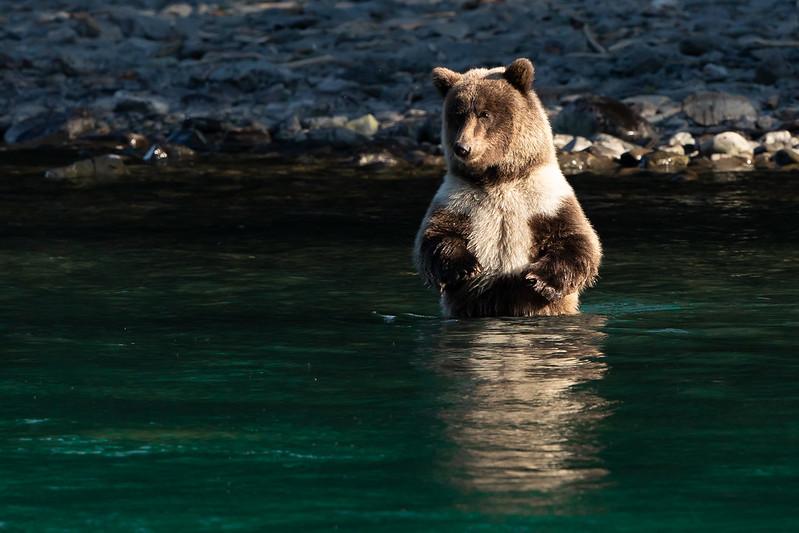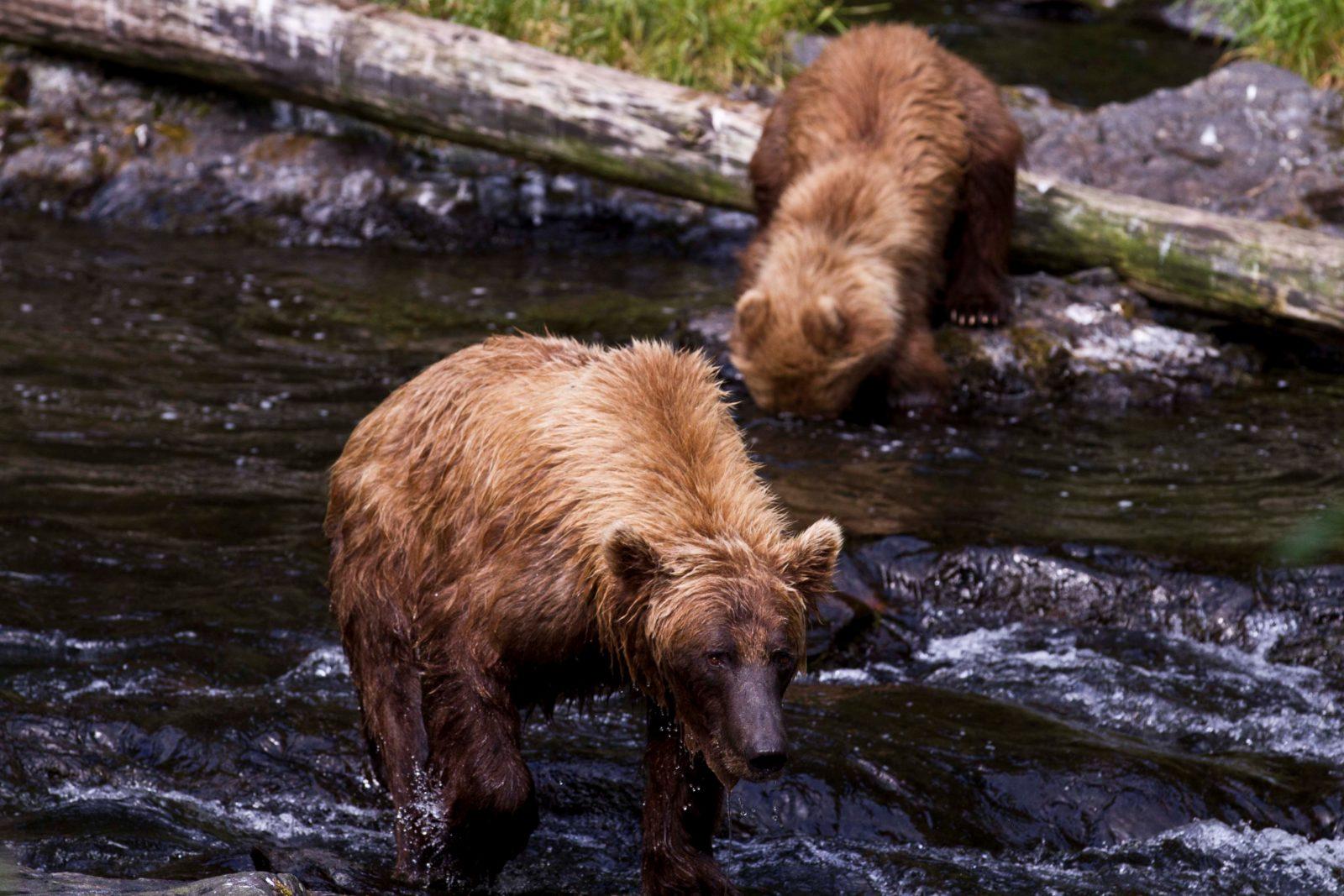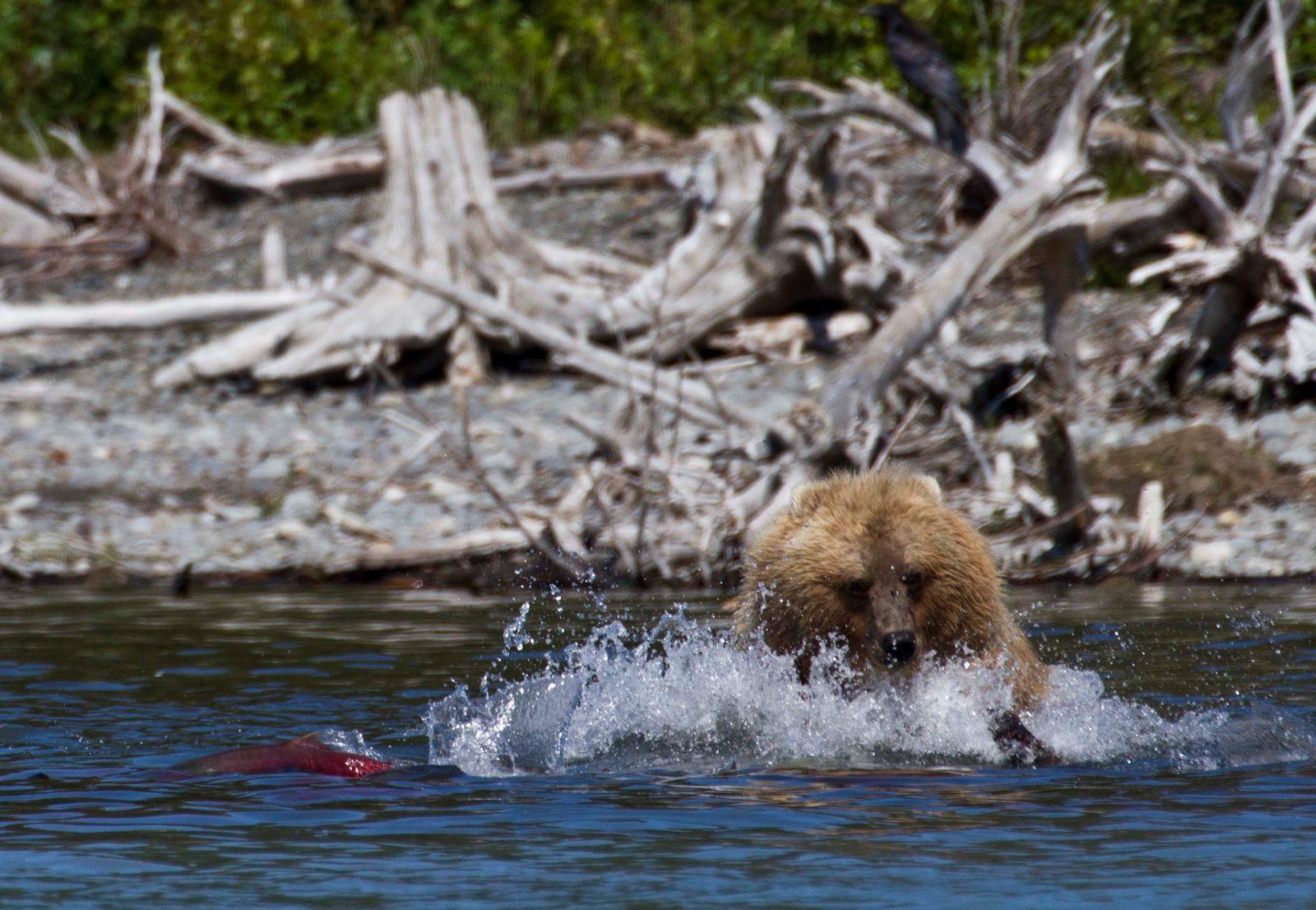
Case closed: Supreme Court declines to hear case, ban on brown bear-baiting in the Kenai Refuge stands
By Theresa Soley, communications coordinator
Expired bread and donuts stuffed into five-gallon buckets, with grease or cooking oil to produce a stronger scent. Maybe meat, candy, and other rotting garbage stacked into a bait pile – and left at a particular site.

This is how to begin to bait a bear, an activity that typically takes place near roads and trails, given the difficulty of hauling in such materials. This can lead to public safety concerns in areas where people hike, boat, fish, forage, and enjoy places, including national wildlife refuges.
Bear baiting also makes it much easier for a hunter to kill a bear, and its popularization has vastly increased the take of brown bears on the Kenai peninsula. A recent survey of Alaska voters indicated that more than 69 percent of those surveyed oppose this type of bear baiting for sport hunting on federally managed lands.
A unique population of bears
Kenai brown bears are a genetically unique population, composed of fewer than 600 individuals, and this number is believed to be declining. Because the Kenai Peninsula begins as a narrow isthmus — it almost resembles an island — brown bear movements are restricted. This has created a geographic bottleneck and genetic insulation, leading to formation of a unique population of bears with particular population characteristics on the Kenai peninsula.
Genetic diversity has innate value, and many groups, including Trustees for Alaska, protect it when threatened. Kenai brown bears deserve preservation and protection.
Federal agencies have authority in managing wildlife refuges

The Kenai National Wildlife Refuge is a federally managed area, so the U.S. Fish and Wildlife Service has authority over regulations, including hunting practices, within the refuge’s boundaries.
Across the U.S. and in Alaska, large mammalian predators including bears, wolves, and coyotes are sometimes perceived by people as a threat to wild and domesticated prey. There have been many attempts, like by ranchers or hunters, to remove predators that threaten animals, like deer or livestock, by legalizing hunting and killing of the predators. The state of Alaska wants exclusive authority over hunting regulations, including on federal lands.
The state of Alaska generally manages sport hunting, but regulations must be consistent with federal mandates. Over the past decade the state has aggressively liberalized sport hunting practices for predators, in an attempt to decrease predator populations, led by the misguided and unsubstantiated notion that this would increase harvest of prey species like moose and caribou. The state intended many of these hunting allowances to apply even on federal lands set aside to protect wildlife.
How did baiting bears become a legal fight?
The Fish and Wildlife Service created a rule in 2016 to maintain oversight over hunting regulations in the Kenai Refuge; the state and the Safari Club challenged this 2016 rule with a lawsuit.
In 2017, Trustees intervened in the lawsuit on behalf of 15 clients to protect Kenai brown bears, and in 2020 the District Court of Alaska upheld the Fish and Wildlife Service’s authority to prohibit bear baiting in the Kenai Refuge. The state appealed this decision to the U.S. Ninth Circuit Court, which also upheld Fish and Wildlife Service’s authority to ban bear baiting. Then the state took that ruling to the Supreme Court.
Meanwhile, a 2020 Trump-era rule attempted to remove Kenai brown bear protections and further liberalize hunting on the Refuge by eliminating the requirement that trappers obtain a permit. The Fish and Wildlife Service officially withdrew this proposed rule, which would have allowed brown bear baiting, this week.
Closing the case means brown bear baiting is prohibited in the Kenai Refuge

On March 6, the U.S. Supreme Court declined to review the Ninth Circuit Court of Appeals decision made in April 2022, and this means the Ninth Circuit decision upholding federal oversight and management of hunting activities in the Kenai Refuge remains in place.
“The Kenai Refuge was designated to protect a natural diversity of wildlife, including brown bears,” said Rachell Briggs, staff attorney. “Thanks to the Supreme Court’s recent decision, the Fish and Wildlife Service can continue to ensure that healthy ecosystems thrive on the Kenai Refuge, vulnerable Kenai brown bears remain protected, and visitors are able to continue to view and enjoy the rich diversity of wildlife Alaska has to offer.”


